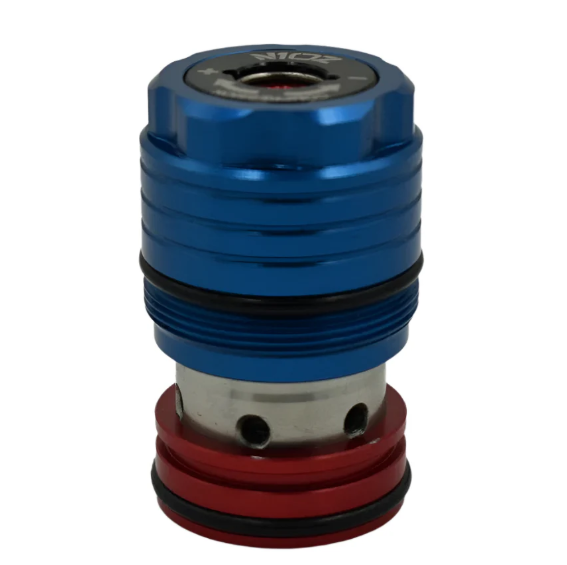Ultra-High Temperature Pasteurization (UHT) is an advanced method of food processing used to make food safe to eat while keeping it fresh. This technique is commonly used for products like milk, juices, and soups. It works by heating food to very high temperatures for a very short time. This method kills harmful bacteria while helping the food keep its taste, nutrients, and texture. It’s an important process for ensuring food safety without using preservatives.
How Heat Treatment Helps Preserve Food Quality
Ultra-high temperature processing is a method of treating food by quickly heating it to temperatures between 135°C (275°F) and 150°C (302°F). After the food reaches this temperature, it is cooled down rapidly. The goal is to eliminate harmful bacteria like E. coli and Salmonella, which can cause foodborne illnesses. Unlike other methods, this technique doesn’t cause food to lose its flavor or essential nutrients. Instead, it helps preserve both the taste and nutrients while extending the food’s shelf life.
This process is commonly used for liquids such as milk, juice, and even soups. It offers many benefits for both consumers and food producers.
Understanding the Process
Here’s how the process works:
- Heating: The food is heated to very high temperatures, usually between 135°C (275°F) and 150°C (302°F), for a very short time. This heat is enough to kill any bacteria or harmful microorganisms present in the food.
- Holding Time: The food is kept at the high temperature for just a few seconds. This short exposure ensures that harmful bacteria are destroyed while still preserving the taste and nutrients of the food.
- Cooling: After the food is heated, it is rapidly cooled down. This step prevents the food from losing its quality and ensures it stays fresh for a long time.
This method works especially well for products like milk, juice, and ready-to-eat meals. These products can stay on the shelf for months without needing to be refrigerated.
UHT vs. HTST: What’s the Difference?
There are other pasteurization methods used in the food industry, like High Temperature Short Time (HTST) pasteurization. Although both methods aim to make food safe, they differ in how they heat the food:
- UHT Pasteurization: This method uses higher temperatures (135°C to 150°C or 275°F to 302°F) for a very short time. It’s often used for milk, juice, soups, and sauces. Products treated with UHT can stay fresh for several months without refrigeration.
- HTST Pasteurization: This method uses lower temperatures (around 72°C or 162°F) for a longer period. It’s mostly used for milk and other dairy products. HTST is ideal for products that need to be refrigerated and have a shorter shelf life.
While both methods kill bacteria, UHT is typically better for products that need to stay fresh for long periods without being refrigerated.
The Importance of High-Temperature Food Processing
The UHT process is crucial for making food safe to eat. It helps protect against harmful bacteria that can cause foodborne illnesses. It also keeps food fresh without needing preservatives. Some of the major benefits include:
- Food Safety: UHT ensures harmful bacteria are killed, making the food safe to eat.
- Long Shelf Life: UHT-treated products can last for months, sometimes even without refrigeration. This is because the process kills bacteria that could cause spoilage.
- Freshness: Despite the high heat, UHT helps maintain the food’s natural flavor and texture. This is especially important for products like milk and juice, where flavor is key.
The Role of Aseptic Filling in UHT
After food is treated with UHT pasteurization, it is filled into containers in a sterile environment. This is called aseptic filling. The containers are sterilized to prevent any bacteria from getting into the food. After filling, the containers are sealed tightly to keep the food fresh and safe. This combination of UHT and aseptic filling ensures that food stays safe for longer and doesn’t spoil.
Here’s how aseptic filling works:
- Sterilization: Containers are first sterilized to remove any bacteria before the food is added.
- Filling in a Clean Environment: The food is then added to the sterilized containers in a sterile environment. This prevents bacteria from getting into the food after it has been pasteurized.
- Sealing: The containers are sealed tightly to stop air or bacteria from entering, ensuring the food stays fresh.
Benefits of High-Temperature Pasteurization
High-temperature pasteurization provides many benefits for both food manufacturers and consumers. Some of the key advantages are:
- Increased Shelf Life: Products treated with UHT can last for a much longer time compared to those processed with other methods. This means that milk, juices, and other beverages can be stored for months without going bad.
- Better Food Safety: UHT kills harmful bacteria and microorganisms that could make food unsafe to eat. It is an effective way to ensure food is safe for consumption.
- Preserved Nutrients and Flavor: Despite using high heat, UHT helps preserve the nutrients and flavor of the food. This means that the food tastes fresh and retains its nutritional value.
Common Products That Use this method
UHT is used in many types of food products. Here are some of the most common ones:
- Milk and Dairy Products: Milk, cream, and yogurt are often treated with UHT pasteurization. This allows them to stay fresh for months without the need for refrigeration.
- Fruit Juices: Juices, especially those that are not refrigerated, are treated with UHT to keep them fresh and safe to drink for long periods.
- Soups and Sauces: Ready-to-eat soups and sauces can be pasteurized using UHT. This helps them stay fresh on the shelf while maintaining their taste and texture.
- Ready-to-Drink Beverages: Other beverages like iced tea, coffee, and sports drinks also benefit from UHT pasteurization to increase shelf life and safety.
How Does UHT Pasteurization Benefit Consumers?
UHT pasteurization brings a lot of advantages to consumers. Here are a few:
- Longer Shelf Life: Because UHT extends the shelf life of food, you don’t have to worry about products going bad quickly. This reduces food waste and saves money.
- Safe to Consume: UHT ensures that harmful bacteria are killed, which makes food safer for people to eat.
- Maintains Freshness: The high heat used in UHT pasteurization doesn’t compromise the food’s flavor, color, or nutritional value, so consumers get fresh, healthy food.
Advancing Food Processing for Better Quality
Ultra-High Temperature Pasteurization is one of the best ways to make food safe, fresh, and long-lasting. It helps preserve the natural flavors and nutrients of food while killing harmful bacteria. Whether it’s for milk, juice, or soups, UHT ensures that food stays safe to eat for months. As we move forward, this process will continue to play a big role in the food industry, helping producers deliver high-quality food that people can trust.
MicroThermics offers advanced equipment that helps food producers create safe and fresh products. Their technology ensures high-quality food with a longer shelf life and fewer bacteria.




